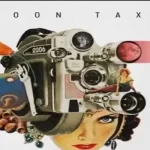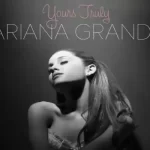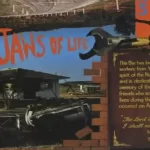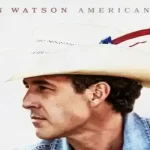Hip-hop music is a genre that originated in the African American and Afro-Caribbean communities of the Bronx, New York City, in the 1970s. Since its inception, hip-hop has evolved into a global cultural phenomenon, influencing various aspects of popular culture, including fashion, dance, and art. This in-depth article will explore the history, characteristics, and impact of hip-hop music, as well as highlight some of its notable artists and songs.
Hip-hop music songs
Hip-hop music encompasses a vast array of songs, each with its unique style and message. From iconic anthems to introspective storytelling, hip-hop songs have played a significant role in shaping the genre’s identity and impact. Some popular hip-hop songs include “Juicy” by The Notorious B.I.G., “Lose Yourself” by Eminem, and “California Love” by Tupac Shakur.
Hip-hop music artists
Hip-hop music has been propelled by talented artists who have pushed boundaries, challenged societal norms, and crafted groundbreaking music. Notable hip-hop artists include pioneers such as Grandmaster Flash and the Furious Five, Run-D.M.C., and Public Enemy, as well as contemporary figures like Jay-Z, Kendrick Lamar, and Cardi B.
Hip-hop music Genres
Parent Genres of Hip Hop Music:
- Funk: Funk music’s rhythmic and groove-based style laid the foundation for the rhythmic elements of hip hop.
- R&B (Rhythm and Blues): R&B’s soulful vocal styles and melodies influenced the vocal aspects of hip hop music.
- Disco: Disco music’s use of repetitive beats and danceable rhythms contributed to the rhythmic and dance-oriented nature of hip hop.
Subgenres of Hip Hop Music:
- Alternative Hip Hop: A genre that explores unconventional sounds, themes, and experimental production techniques.
- Experimental Hip Hop: Focuses on pushing the boundaries of traditional hip hop by incorporating avant-garde and unconventional elements.
- Hipster Hop: A subgenre characterized by its focus on indie and alternative music influences within the hip hop framework.
- Boom Bap: Known for its drum-heavy production style and lyrical focus, often associated with the “golden age” of hip hop.
- Bounce: Originating in New Orleans, this subgenre features energetic beats and call-and-response vocal patterns.
- British Hip Hop: Hip hop originating from the United Kingdom, often featuring distinctive British cultural references.
- Chopped and Screwed: Involves remixing songs by slowing them down and manipulating the pitch to create a unique and hypnotic effect.
- Chopper: Known for its fast-paced delivery of lyrics, with emphasis on intricate rhyme schemes and wordplay.
- Christian Hip Hop: Incorporates Christian themes and messages into hip hop music.
- Cloud Rap: Focuses on atmospheric and dreamy production, often with introspective and emotional lyrics.
- Crunk: Characterized by energetic beats, chants, and a party-oriented atmosphere.
- Crunkcore: A fusion of crunk and hardcore, combining hip hop and punk elements.
- East Coast Hip Hop: Originating in the Eastern United States, known for its complex lyricism and storytelling.
- Freestyle Rap: Involves improvised lyrics and often showcases an artist’s lyrical skills and creativity.
- Gangsta Rap: Often explores themes of street life, violence, and urban experiences.
- Horrorcore: Incorporates horror-themed lyrics and imagery into hip hop music.
- Hyphy: Originating in the Bay Area, known for its upbeat and energetic sound.
- Jerkin’: A dance-oriented subgenre with a focus on energetic and upbeat production.
- Latin Hip Hop: Incorporates Latin musical elements and cultural influences into hip hop music.
- Lofi Hip Hop: Features relaxed and chill production, often used as background music.
- Mumble Rap: Known for its emphasis on melody and the use of unclear, enunciated lyrics.
- Nerdcore: Focuses on geek and pop culture references within hip hop lyrics.
- Political Hip Hop: Addresses social and political issues, often featuring socially conscious lyrics.
- Conscious Hip Hop: Aims to raise awareness and provoke thought about social issues and self-improvement.
- Progressive Rap: Pushes the boundaries of traditional hip hop with complex rhythms and unconventional structures.
- Snap Music: Known for its use of finger-snapping and hand-clapping beats.
- Southern Hip Hop: Originating in the Southern United States, characterized by unique rhythms and slang.
- Trap Music: Features prominent use of hi-hats, dark melodies, and lyrics about street life.
- Drill Music: Originating in Chicago, known for its aggressive beats and raw lyrics.
- Brooklyn Drill: A regional variant of drill music, originating in Brooklyn, New York.
- UK Drill: Drill music originating in the United Kingdom, often with its own distinctive sound and lyrical themes.
- Latin Trap: A fusion of Latin music and trap elements, incorporating bilingual lyrics.
- Phonk: Blends elements of hip hop and Memphis rap with vintage samples and lo-fi production.
- Plugg: Features heavy use of 808 bass and trap-style beats.
- Tread Rap: Known for its use of repetitive and hypnotic beats.
- Turntablism: Focuses on the manipulation of vinyl records and turntables to create unique sounds and rhythms.
- Underground Hip Hop: Emphasizes authenticity and often explores unconventional topics and sounds.
- West Coast Hip Hop: Originating in the Western United States, characterized by its funk and G-funk influences.
These subgenres represent the diverse range of styles within the hip hop music genre, each with its own unique characteristics and cultural influences.
Hip-hop music examples
- Classic Old School Hip Hop:
- Grandmaster Flash and the Furious Five – “The Message”
- Run-D.M.C. – “It’s Like That”
- Sugarhill Gang – “Rapper’s Delight”
- Golden Age Hip Hop:
- Public Enemy – “Fight the Power”
- A Tribe Called Quest – “Scenario”
- N.W.A – “Straight Outta Compton”
- Alternative Hip Hop:
- OutKast – “Hey Ya!”
- The Roots – “You Got Me”
- MF DOOM – “Rapp Snitch Knishes”
- Boom Bap:
- Nas – “N.Y. State of Mind”
- Wu-Tang Clan – “C.R.E.A.M.”
- Gang Starr – “Mass Appeal”
- West Coast Hip Hop:
- Dr. Dre ft. Snoop Dogg – “Nuthin’ But a ‘G’ Thang”
- 2Pac – “California Love”
- Ice Cube – “It Was a Good Day”
- East Coast Hip Hop:
- The Notorious B.I.G. – “Juicy”
- Jay-Z – “Empire State of Mind”
- Nas – “Illmatic” (album)
- Trap Music:
- Future – “Mask Off”
- Migos – “Bad and Boujee”
- Travis Scott – “SICKO MODE”
- Mumble Rap:
- Lil Uzi Vert – “XO TOUR Llif3”
- Playboi Carti – “Magnolia”
- Lil Yachty – “Minnesota”
- Latin Trap:
- Bad Bunny – “Soy Peor”
- Anuel AA – “Ella Quiere Beber”
- Karol G, Nicki Minaj – “Tusa”
- UK Drill:
- Headie One ft. AJ Tracey, Stormzy – “Ain’t It Different”
- Pop Smoke – “Welcome to the Party”
- Digga D – “Woi”
- Conscious Hip Hop:
- Common – “The Light”
- Kendrick Lamar – “Alright”
- J. Cole – “Love Yourz”
- Experimental Hip Hop:
- Death Grips – “Guillotine”
- Tyler, The Creator – “Yonkers”
- clipping. – “Work Work”
- R&B-infused Hip Hop:
- Drake – “Hotline Bling”
- Lauryn Hill – “Doo Wop (That Thing)”
- Childish Gambino – “Redbone”
- Trap Soul:
- Bryson Tiller – “Don’t”
- Tory Lanez – “Say It”
- Khalid – “Location”
- Nostalgic Hip Hop:
- Skee-Lo – “I Wish”
- Naughty by Nature – “Hip Hop Hooray”
- Digital Underground – “The Humpty Dance”
These examples showcase the diverse range of hip-hop music, from its early roots to the present day, and highlight the various subgenres and influences that have shaped the genre over time.

Characteristics
Rhythm and Beats:
Hip-hop music is known for its strong and prominent beats, often created using drum machines, samplers, and other electronic instruments.
Rhyme and Flow:
Hip-hop is characterized by its rhythmic and poetic nature, with artists often using intricate rhyme patterns and clever wordplay.
Sampling:
Hip-hop frequently utilizes samples from other songs, incorporating snippets of music and vocals to create new compositions.
Lyrics and Storytelling:
The lyrics in hip-hop often reflect the personal experiences, struggles, and social commentary of the artists, using storytelling techniques to convey their message.
DJing and Turntablism:
DJs play a significant role in hip-hop, using turntables and mixing techniques to create unique sounds and live performances.
Freestyle and Battling:
Freestyle rap, where artists improvise lyrics on the spot, and rap battles, where artists compete in a contest of lyrical skill, are important elements of hip-hop culture.
Sampling and Remixing:
Hip-hop artists frequently remix and reinterpret existing songs, bringing new life to classic tracks and adding their own creative spin.
Urban and Street Culture:
Hip-hop music is deeply rooted in urban and street culture, often reflecting the experiences and struggles of marginalized communities.
Social and Political Commentary:
Many hip-hop songs address social and political issues, serving as a platform for artists to express their views on topics like racism, inequality, and systemic injustices.
Stylistic origins
Hip-hop music draws inspiration from various musical genres and styles. Its stylistic origins can be traced back to funk, soul, disco, and R&B. The rhythmic and melodic elements from these genres laid the foundation for the creation of hip-hop beats and instrumentals.
Cultural origins
Hip-hop music emerged as a cultural movement in the 1970s, originating in the marginalized communities of the Bronx, New York City. It provided a creative outlet for African American and Afro-Caribbean youth to express their experiences, frustrations, and aspirations.
FAQ from People Also Ask:
What is the history of hip-hop music?
Hip-hop music originated in the Bronx, New York City, in the 1970s. It was influenced by various musical genres and served as a creative outlet for African American and Afro-Caribbean youth.
Who are some influential hip-hop artists?
Some influential hip-hop artists include Grandmaster Flash and the Furious Five, Run-D.M.C., Jay-Z, Kendrick Lamar, and Cardi B.
What are the main elements of hip-hop music?
The main elements of hip-hop music include rap, sampling, beatboxing, basslines, hooks, and wordplay.
How has hip-hop music impacted popular culture?
Hip-hop music has had a significant impact on popular culture, influencing fashion trends, dance styles, and artistic expressions.
What are some popular hip-hop songs?
Some popular hip-hop songs include “Juicy” by The Notorious B.I.G., “Lose Yourself” by Eminem, and “California Love” by Tupac Shakur.
What are the different sub-genres of hip-hop music?
Hip-hop has various sub-genres, including gangsta rap, conscious rap, trap music, and mumble rap.
How has hip-hop music evolved over the years?
Hip-hop music has evolved stylistically and lyrically, reflecting the changing social and cultural landscape. It has incorporated new sounds, production techniques, and lyrical themes while retaining its core elements.
Conclusion
Hip-hop music has become a global phenomenon that has transcended its humble origins in the Bronx to become a dominant force in popular culture. Through its unique blend of rhythm, poetry, and cultural expression, hip-hop has given a voice to marginalized communities, inspired countless artists, and shaped the musical landscape. With its rich history, diverse artists, and ever-evolving styles, hip-hop continues to captivate audiences worldwide and remains a vital form of artistic expression.








